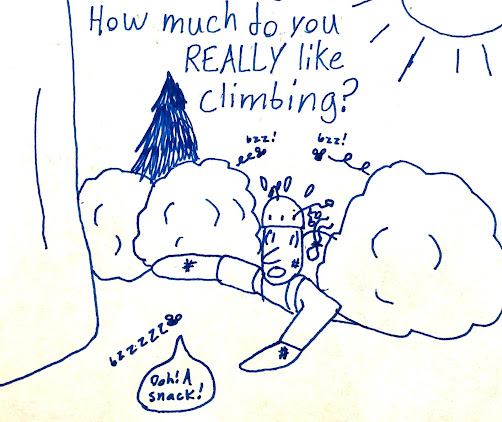How To Send Your Project: 6 Tips I’ve Learned
Let’s begin…
 |
| Nutrition is one factor to capitalize on. Sadly we’re not all like Brad. Photo from Climbing Magazine |
1) Capitalize on as many factors as you can! Show up rested, nourished, and strong with the route memorized. If you can’t get 9 hours of sleep, get as much as you can. Eat a healthy meal instead of a Fruit Loops donut (you’re not Brad Gobright). When you go to the gym, train and practice the route’s style instead of just complaining about setting for an hour.
2) Lower your expectations. Think of the unknown outcome as exciting, flip the negative! Rather than thinking of sending, focus on the present. Take each move as it comes. When things don’t go well remember that it’s a part of what makes a challenge fulfilling. Heaven forbid… maybe have some fun! Don’t take sending too seriously, lest the likely event of falling make the day feel like a “failure”.
3) Don’t demean the importance of “the working burn”. Few things make a route feel easier than knowing every move and it’s nuances. Your first try should be all about finding the RIGHT way, not making the first one work. The working burn doesn’t end with the first try either. Continue to learn with each fall.
 |
| There’s a reason Ondra is so good. Photo from klausisele.com |
4) Visualize! Once you know the route, memorize it! Precious energy can be wasted hesitating if you don’t know moves or when to clip. Visualization can also help with your confidence and focus. You’ll be more likely to “flow” up the route, rather than punt.
5) Rest! I know you’ve heard it a billion times and that’s because it’s important! Rest is vital on-route, off-route, and away from the crag. To prepare for the highest quality effort you need to show up to the cliff rested. To make a good attempt you need to be recovered from the last. The hardest one is on-route. Some may think that you need to “condition yourself to the route” by climbing immediately after you fall off. I believe that this is only relevant IF you have ideal beta, found from many tries of experimentation. If not (which is more probable), rest and then try the move again, applying what you learned from the fall. It’s better to train your body to climb a move the right (rested) way than the unrecovered-chicken winging-elvis-leg way.
6) Set aside the time. If you’re like me then you always feel rushed. Even with a whole day to climb I still catch myself motoring through my stretching routine, my visualization, hiking to the crag, etc. Don’t lower the quality of your redpoint attempts by charging through your warmup! If you’re strapped for time, learn to be efficient. Dial your warmup, set aside the gear you need the night before, and most importantly: find a patient belayer. I’ve found that the main reason I rush is that I don’t want to waste their time.
I hope that you’ve already applied these tips to your climbing. If not, I implore you to give them a shot!


Comments
Post a Comment